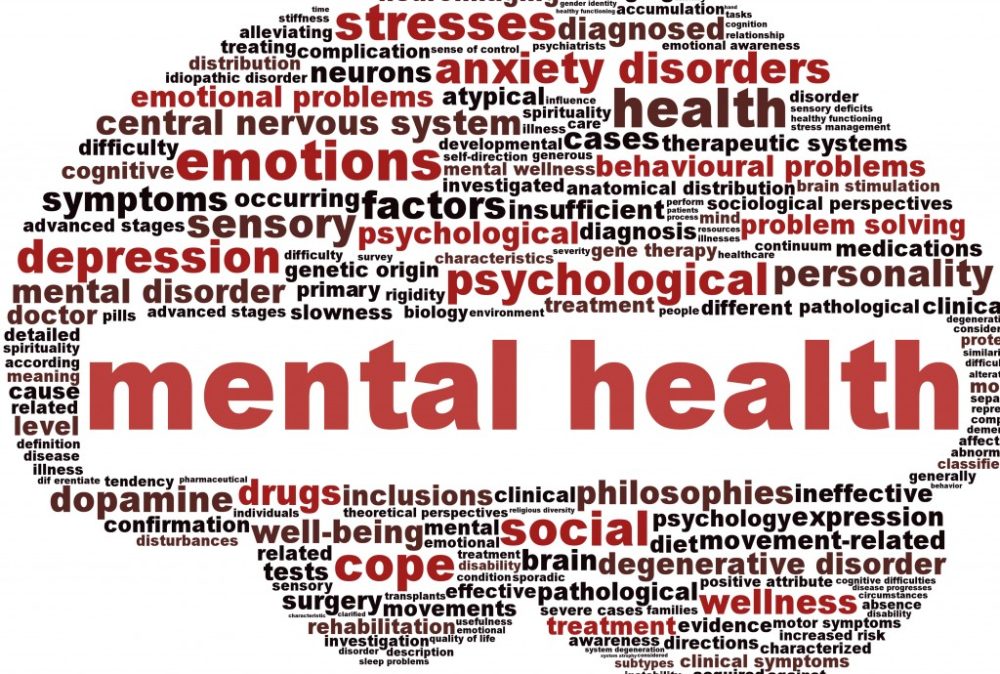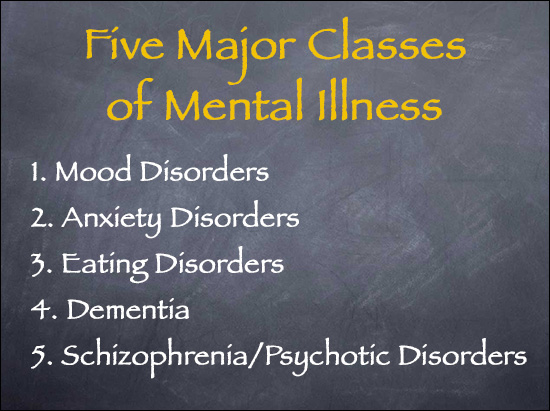
10/21/19 – Signs That You May Be Dealing With Mental Illness & Things You Can Do To Cope & Overcome! (Live Broadcast)
by Tj Sotomayor October 21, 2019 0 commentsLets Get Well!
By: Tommy “Tj” Sotomayor
An Overview of the Major Classes of Mental Illness
Thanks to science, education and outspoken advocates, there is less of a stigma surrounding mental illness than ever before.
In truth, poor mental health affects almost 20 percent of adults each year in the United States, or 1 in 5 people. This means that most Americans will know someone suffering from mental illness or experience it themselves.
While there are more than 200 different diagnosed mental illnesses, there are 5 major categories that most conditions fall within.

What are the 5 Classifications of Mental Illness?
1. Mood Disorders
Mood Disorders affect an estimated 9.5 percent of the population. These disorders create painful mental and physical symptoms along with feelings that go outside the normal variations of happiness or sadness.
Mood disorders are caused by chemical imbalances in the brain, and can be effectively treated with medication and therapy once they’ve been properly diagnosed.
Mood Disorders include:
- Major depression
- Bipolar disorder
- Dysthymia or low grade depression
2. Anxiety Disorders
Anxiety Disorders occur when an individual experiences excessive panic or fear that interferes with their everyday life.
The Anxiety and Depression Association of America reports that anxiety disorders are the most common mental illness in the country, affecting 40 million adults every year.
The symptoms of anxiety disorders manifest both physically and mentally and, left untreated, can be crippling. Anxiety disorders can be successfully treated with a combination of psychotherapy and medication.
Anxiety Disorders include:
- Panic disorder
- Phobias
- Generalized anxiety disorder
- Post-traumatic stress disorder
- Obsessive-compulsive disorder
3. Eating Disorders
Eating Disorders are conditions that tend to be chronic. They can also be life threatening if left undiagnosed and untreated.
These conditions usually develop in adolescence and carry into adulthood. As many as 5 million cases of eating disorders are diagnosed each year.
Women are more likely to suffer from these illnesses than men.
Eating disorders are marked by either a severe reduction in eating, extreme overeating or binge eating, along with excessive anxiety related to weight or body image.
Treatment for these illnesses usually includes psychotherapy or psychological counseling combined with careful attention to the medical and nutritional needs of the individual.
Eating Disorders can include:
- Anorexia nervosa or self-starving
- Bulimia nervosa or binge-eating followed by purging
- Binge eating disorder
National Eating Disorders Awareness Week is in February.
4. Dementia
Dementia is characterized by a quick change in cognitive abilities, such as memory loss and the degeneration of physical and intellectual functions.
Most people associate dementia with Alzheimer’s disease. However, this condition can be brought about by other factors, such as a medical condition.
In these cases, dementia can be treated and sometimes reversed, but for the most part, dementia is not a curable disease.
Dementia can include:
- Vascular dementia
- Dementia caused by medical conditions, such as head trauma, HIV and Parkinson’s disease
- Substance-induced dementia, brought about by alcohol or drug abuse, inhalants and exposure to toxins such as lead and mercury
5. Schizophrenic/Psychotic Disorders
Schizophrenic/Psychotic Disorders are believed to be caused by chemical imbalances in the brain that create a variety of symptoms, like hallucinations, delusions, withdrawal, impaired reasoning and incoherent speech.
The National Institute of Mental Health reports that approximately 1.1 percent of the adult population in the U.S. is dealing with this disease.
Schizophrenia requires lifelong treatment with antipsychotic medications even in the absence of symptoms.
Though science is making progress with these medications, some patients are reluctant to take them because of rare but serious side effects.
Schizophrenia can include:
- Paranoid-schizophrenia
- Disorganized-type schizophrenia, characterized by speech and behavior that are disorganized and difficult to comprehend
- Undifferentiated-type schizophrenia, some symptoms from each of the above diagnoses, but not enough of either to be considered in those categories
- Residual-type schizophrenia, a past history of at least one schizophrenic episode, but currently showing no symptoms
By understanding that mental illnesses, in many cases, are common and treatable conditions that everyday people sometimes cope with, we can continue to reduce or erase the stigma associated with them.






No Comments so far
Jump into a conversationNo Comments Yet!
You can be the one to start a conversation.Only registered users can comment.